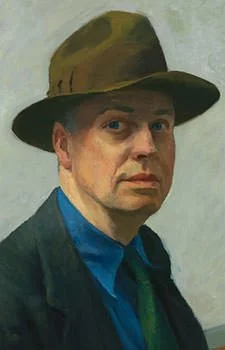Literature's Reflection of Realism in Society

In the middle of the 19th century, literary realism developed as a response to Romanticism's romanticized depictions of life. This movement focused on the common experiences of regular people in an effort to portray life as it actually is. By emphasizing the hardships of the working class and tackling social issues, realist authors sought to capture the complexity of human nature and society. In the middle of the 19th century, realism became popular as a literary movement that aimed to portray life as it actually was, devoid of romanticism or idealization. As opposed to Romanticism's sentimental and frequently fanciful aspects, Realism concentrated on the common experiences of common people in an effort to accurately and impartially depict the complexity of human nature and society.
This movement wasn't limited to literature; it also coincided with changes in the visual arts, where artists like Gustave Courbet and Jean-François Millet started to depict common people and laborers in everyday environments, defying the norms of mythological and historical subjects. Themes like social inequality, moral quandaries, and the effects of industrialization were all explored by realist writers as they dug into the lives of the middle and lower classes. Readers were prompted to face the reality of their environment by their emphasis on the commonplace and the everyday, which served as a mirror to society.

The Prisoners of War by Igor Barkhatkov (1989) : Painting Oil on Canvas - Singulart
Important Aspects of Realism
1. True depiction of daily existence
Realist writing places a strong emphasis on portraying commonplace persons and occurrences. The emphasis is on everyday life's ordinary facets rather than heroic heroes or extraordinary adventures. For example, the life of rural English townspeople are shown in George Eliot's Middlemarch, which explores their social and personal struggles truthfully.
2. Observations and Detailed Descriptions
Realist writers describe environments, characters, and actions in great detail because they pay close attention to these details. This method contributes to the creation of a realistic and vibrant depiction of the world. Madame Bovary by Gustave Flaubert, which captures the inner anguish of its protagonist and the society she lives in, is famous for its accurate and comprehensive narrative.
3. Criticism and Social Commentary
A lot of realism literature is a critique of social inequalities and conventions. Authors tackle topics including gender inequity, class inequality, and moral hypocrisy through their stories. The Adventures of Huckleberry Finn, written by Mark Twain, takes aim at the moral inconsistencies and ingrained bigotry of 19th-century America.
4. Depth of Psychology
The psychological motivations of characters are examined in realist writing, along with their internal tensions and complexities. Readers can comprehend the factors influencing people's choices and actions because to this emphasis on character development. With its in-depth examination of the protagonist's consciousness and moral quandaries, Henry James's The Portrait of a Lady serves as an excellent example of this.

The Winnowers, Gustave Courbet, Oil on Canvas
Different Kinds of Realism
Realism includes a number of subgenres, each of which concentrates on a distinct facet of reality:
The lives and hardships of the working class are highlighted by social realism, which frequently addresses problems like exploitation and poverty. One of the foundational works in this genre is Les Misérables by Victor Hugo.
Using scientific techniques to investigate human behavior, naturalism is an extension of realism that contends that a person's surroundings and genetic makeup influence them. The grim reality of French coal miners is shown in Émile Zola's Germinal.
Characters' inner lives are the main focus of psychological realism, which looks at their motives, feelings, and ideas. Crime and Punishment by Dostoevsky is a well-known example, exploring the protagonist's mind.
Using a combination of magical and realistic storytelling, magical realism treats the unusual as commonplace. A well-known book in this genre is One Hundred Years of Solitude by Gabriel García Márquez.
Realism's Classic Works
The realist movement has been defined and exemplified by a number of literary classics:
The limitations of romantic ideals and rural existence are critically portrayed in Gustave Flaubert's Madame Bovary.
George Eliot's Middlemarch is a sophisticated examination of economic and social concerns in a tiny English town.
A satirical book on race and morality in pre-Civil War America, The Adventures of Huckleberry Finn was written by Mark Twain.
An profound psychological drama about guilt and redemption can be found in Fyodor Dostoevsky's Crime and Punishment.

Learnodo Newtonic
The phrase "Learnodo Newtonic Realism" does not refer to any well-known art movement or established aesthetic. Rather than having a canonical meaning in art history, it seems to be a phrase that is unique or personal, perhaps created by a single person or group.

William Robert Symonds | Self-portrait of the artist (1885)
English painter William Robert Symonds (1851–1934) is renowned for his genre settings, which frequently feature children and animals and are often emotional. The 'prize for the best drawing from the Antique' was given to him in 1873 after he attended the Royal Academy Schools and Ipswich Art School. After staying in Antwerp for a few months, Symonds focused on painting portraits and began showing often at the Royal Academy in 1876. The 40 by 30 cm chalk sketch from 1885 is titled Self-portrait of the Artist. It was auctioned off in September of 2013. A number of public collections, including Christchurch Mansion in Suffolk and The Wallace Collection in London, own Symonds' artwork. Based on the size and medium, his works have sold for between $232 and $17,535 at auction on several occasions.

American Realism in Visual Arts
![]()
![]() The Lasting Influence of Realism
The Lasting Influence of Realism
With its influence on later movements and modern narrative, realism has had a long-lasting effect on literature. Both authors and readers continue to find resonance in its emphasis on social relevance and authenticity. Readers are encouraged to consider their personal experiences and the society they live in by realist literature's depiction of life in all its complexity.